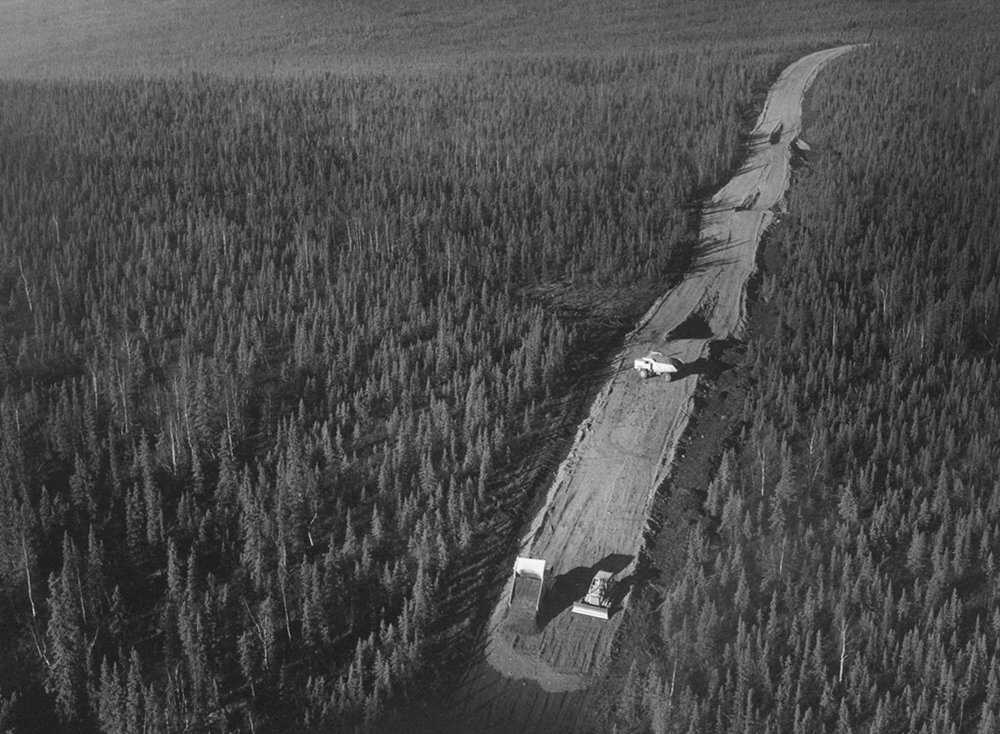
When President Dwight D. Eisenhower signed the law making Alaska the 49th U.S. state, he also granted Alaska's leaders 103 million acres (out of 375 million acres) of land as part of the Statehood Act. Between 1902 and 1926 the federal government had set aside 54 million acres as national parks and wildlife refuges. All the rest was potentially subject to Native title. However, Congress had never made any treaties with Alaska Natives.
"There are some 17 language groups and more than that number of tribes. It was pretty clear, and relatively easily definable, as to what land we claimed based upon our occupancy. What was an issue was how do we all come together in order to pursue these claims, both at the state level and with the federal government? — Byron Mallott, Native leader, First Alaska Institute.
Oil Discovery
By December 1966, Native leaders formed the Alaska Federation of Natives, the first statewide organization to advocate for a Native land claims settlement. In some of the early discussions, the government offered less than $100 million and no land. In 1968, with the discovery of oil on state-owned land in the Arctic Circle, Native leaders felt it was now or never to make a settlement. All of sudden the stakes were a lot higher. Byron Mallott was only 22 years old when he got involved with the Native land claims issue.
Byron Mallott: "Suddenly in the 1960s, you saw this powerful convergence of forces that all had to do with land, the state's ability to select up to 103 million acres of land under the Statehood Act, the discovery of oil, powerful economic forces at work to bring the oil to market. And it became clear to the Native Alaska community that if it were going to have any chance at all of settling their claims to land in Alaska that community had to get active, and get active very quickly."
Lawsuits to Halt Construction
The political jostling came to a head when on March 9, 1970, five Native villages filed suit against both the oil companies and the U.S. Department of Interior, which was poised to grant a construction permit to the oil companies. Of the two suits, one was against Interior Secretary Walter J. Hickel to stop the building until Natives along the pipeline gave consent. The second suit, filed in state court, claimed that oil companies had failed to honor a contract to hire Native contractors and workers for the pipeline project. On April 3, 1971, in Federal District Court, Judge George L. Hart issued a preliminary injunction to stop the Department of the Interior from permitting construction of a road that would cross land claimed by the sixty-six residents of Stevens Village near the Yukon River. It was a major blow for the pipeline, but a landmark case for Alaskan Natives. The state and federal governments would have to settle land claims with Alaskan Natives if they wanted a pipeline. For months the parties involved worked to hammer out a deal.
Byron Mallott: "It was all about the economic value of oil and they needed to remove this potential roadblock."
The Settlement
The dispute was finally resolved and President Richard M. Nixon signed into law the Alaska Native Land Claim Settlement Act on December 18, 1971. The law gave Alaska Natives 44 million acres of land and $962.5 million. Half of the money was to be paid from royalties on oil production.
Byron Mallott: "It was certainly a unique deal. There's no question that the Alaska Native Claims Settlement Act at the time was just unprecedented."






